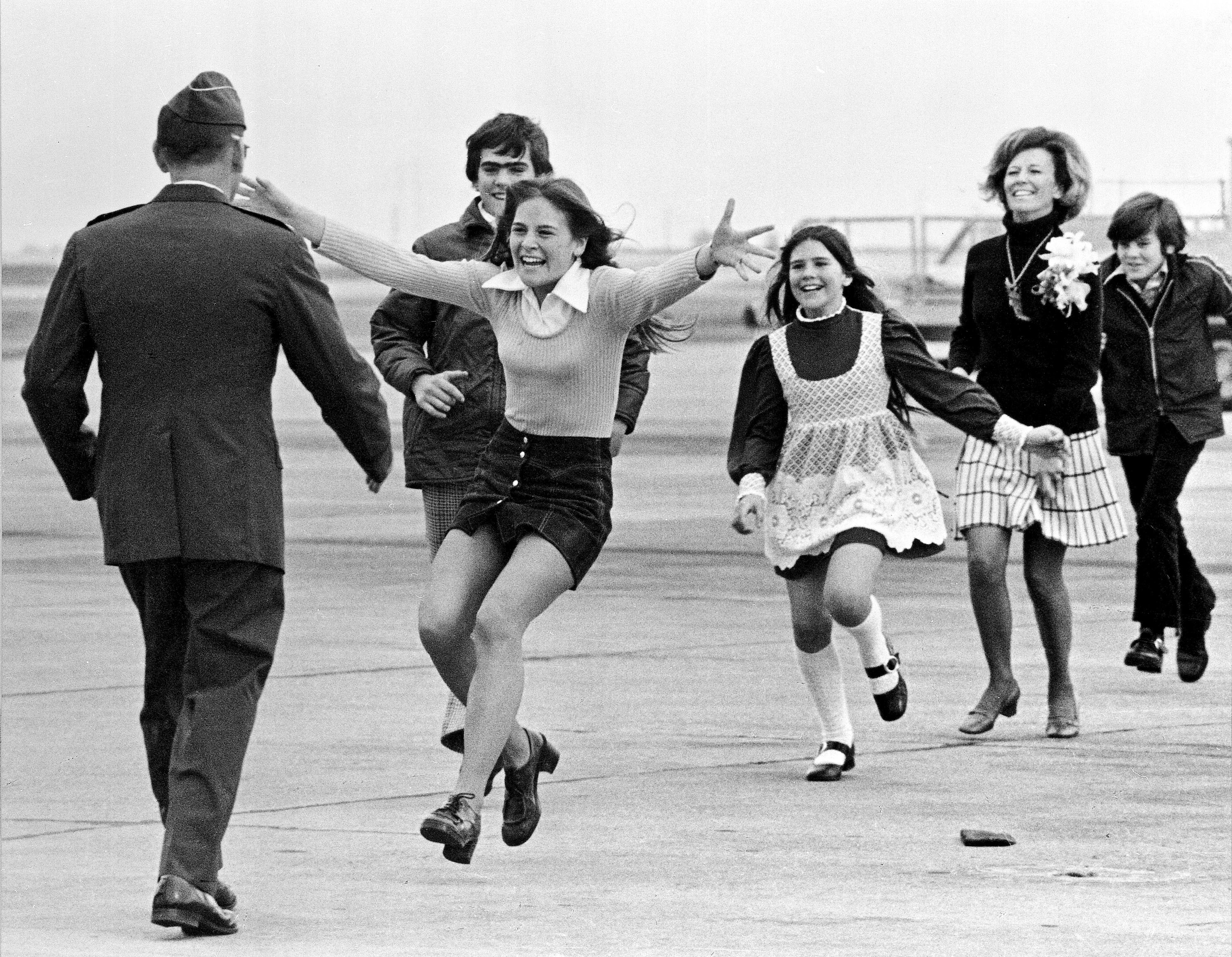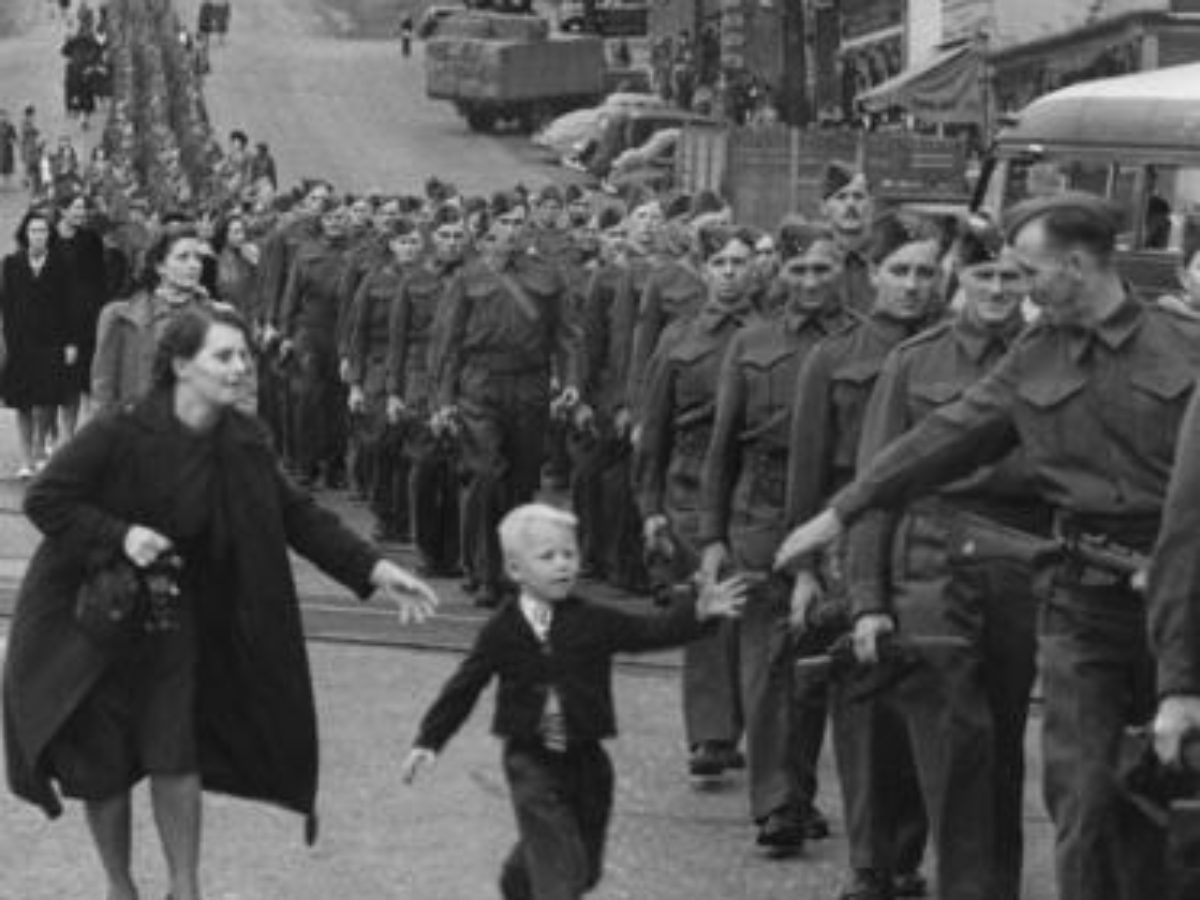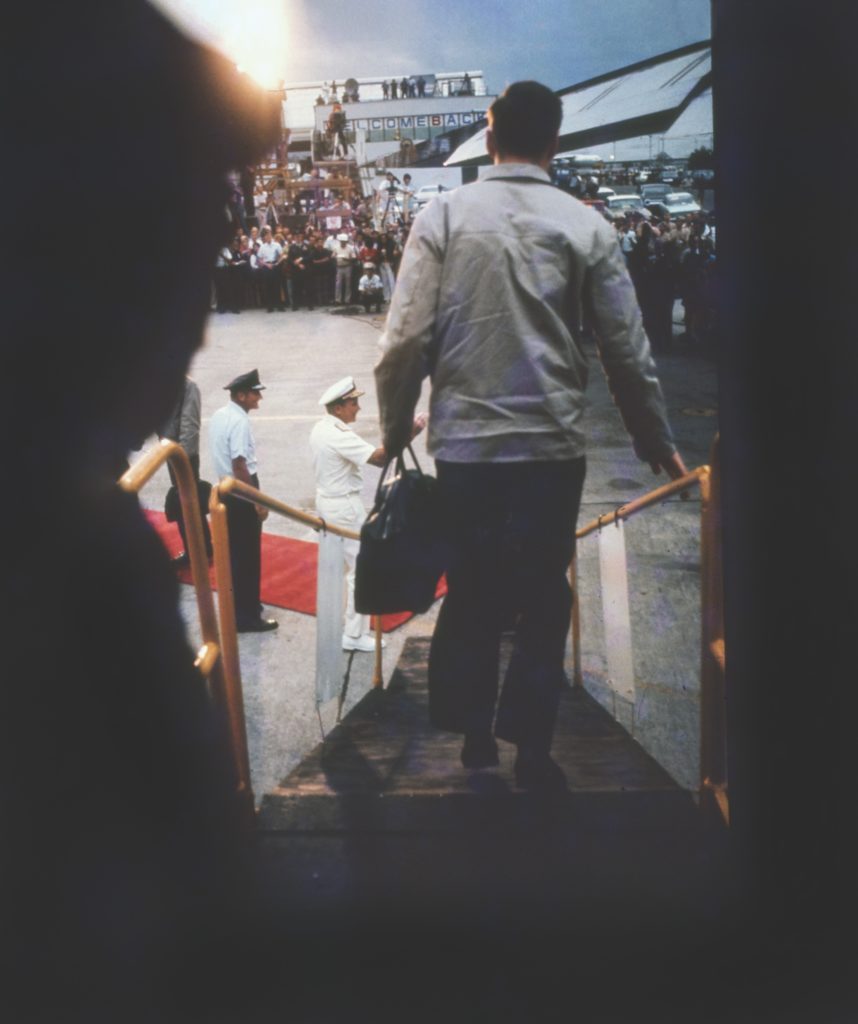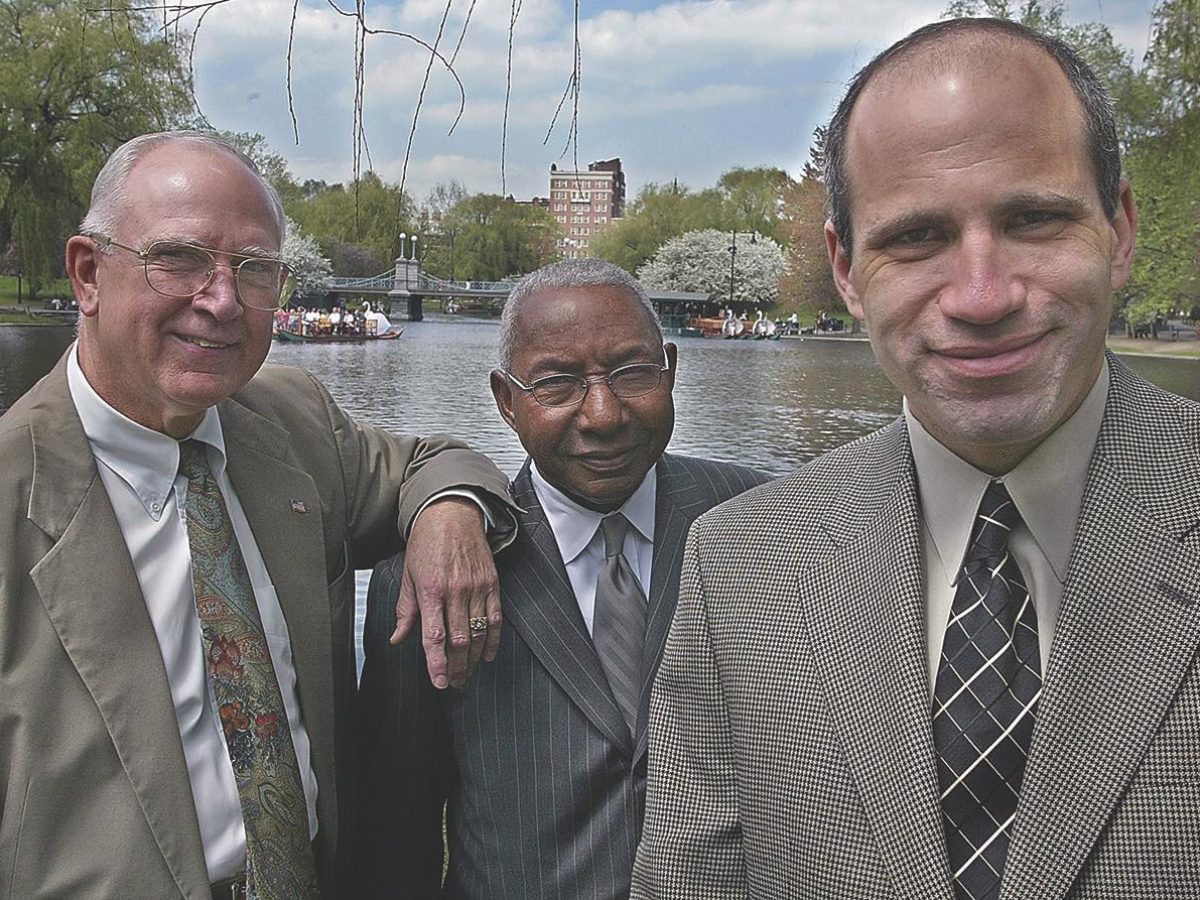The photo itself is iconic: A seemingly anonymous POW’s back is to the camera as his gleeful family runs pell-mell toward him. The image, dubbed, “Burst of Joy,” was printed and touted across America, earning photographer Slava “Sal” Veder the Pulitzer Prize in 1974. Veder’s photograph came to represent those American POWs who were, at long last, free.
The actual story behind the photo, however, was significantly less joyous than the title implied.
The POW in the photo, Lt. Col. Robert L. Stirm, was a fighter pilot who was shot down over Hanoi, North Vietnam on October 27, 1967. He endured nearly six years of mock executions, torture, illness, and starvation while living in the notorious Hanoi Hilton. Yet throughout that ordeal, “the momentum to stay alive for my family’s sake was very strong,” Stirm told the Associated Press. “I had four neat children and what I believed to be a neat wife that I wanted to get back to see. That’s a strong incentive.”
After years of tense start-and-stop negotiations between the U.S. and North Vietnamese governments, the appropriately coined “Operation Homecoming” began. Starting on February 12 and continuing until March 29, 1973, almost 600 American POWs were released from North Vietnamese POW camps. “Hanoi Taxis,” or C-141s, ferried the sick and wounded out first, followed by the “taxis” for those who had been imprisoned longest. Among the POW ranks were Floyd Thompson, who was shot down in 1963 and retained the undesirable title of the war’s longest-held prisoner; John McCain, the late senator and former presidential candidate; and former Sen. Jeremiah Denton Jr., who “famously blinked out the letters T-O-R-T-U-R-E, in Morse code, while being interviewed for a propaganda film,” according to Vietnam magazine’s Rick Fredericksen.
GET HISTORY’S GREATEST TALES—RIGHT IN YOUR INBOX
Subscribe to our Historynet Now! newsletter for the best of the past, delivered every Wednesday.
Thanks to Veder’s “Burst of Joy,” Stirm would join the small cadre of prisoners captivating public interest.
His arrival, however, would leave him feeling anything but loved.
Just three days before Stirm’s March 1973 arrival at Travis Air Force Base, California, he received a “Dear John” letter from his wife of 18 years, Loretta.
“I can’t begin to tell you how proud we are of you,” Loretta wrote. “The children and I never missed a night saying a prayer for your safe return. I have your pictures up and your certificates and have kept you very much with us while you were gone and the children have not forgotten their father.
“I would like to see you when you come home, but will understand if you would rather not.”
Recommended for you
As Stirm descended from the plane onto the tarmac, there was Loretta.
“In some ways, it’s hypocritical, because my former wife had abandoned the marriage within a year or so after I was shot down,” Stirm recounted. “And she did not even have the honor and integrity to be honest with the kids. She lived a lie. This picture does not show the realities that she had accepted proposals of marriage from three different men. … It portrays (that) everybody there was happy to see me.”
Lorrie Kitching, née Stirm, who was just nine years old when her father was shot down, later noted that her mother was quite young at the time and that raising four children on her own had taken its toll.
The pair divorced within a year, with Lorrie and her brother Robert Jr. living with Stirm. The two youngest children, Cindy and Roger, remained with Loretta. Despite the turmoil surrounding the reunion, the personal reunion that was made so public elicits a different memory for Stirm’s children — one of sheer happiness.
“It’s a wonderful piece of history that we just happened to stumble into,” Lorrie recalled. “It never would have gone away in my mind, but seeing that photo brings it all back again — just all the joy that was there.”
And while all four children have “Burst of Joy” hanging in their homes, it’s more complicated and bittersweet for Stirm. He kept copies of the image, but none are on display. Asked why, Stirm doesn’t mince words.
“Because of her.”
historynet magazines
Our 9 best-selling history titles feature in-depth storytelling and iconic imagery to engage and inform on the people, the wars, and the events that shaped America and the world.









